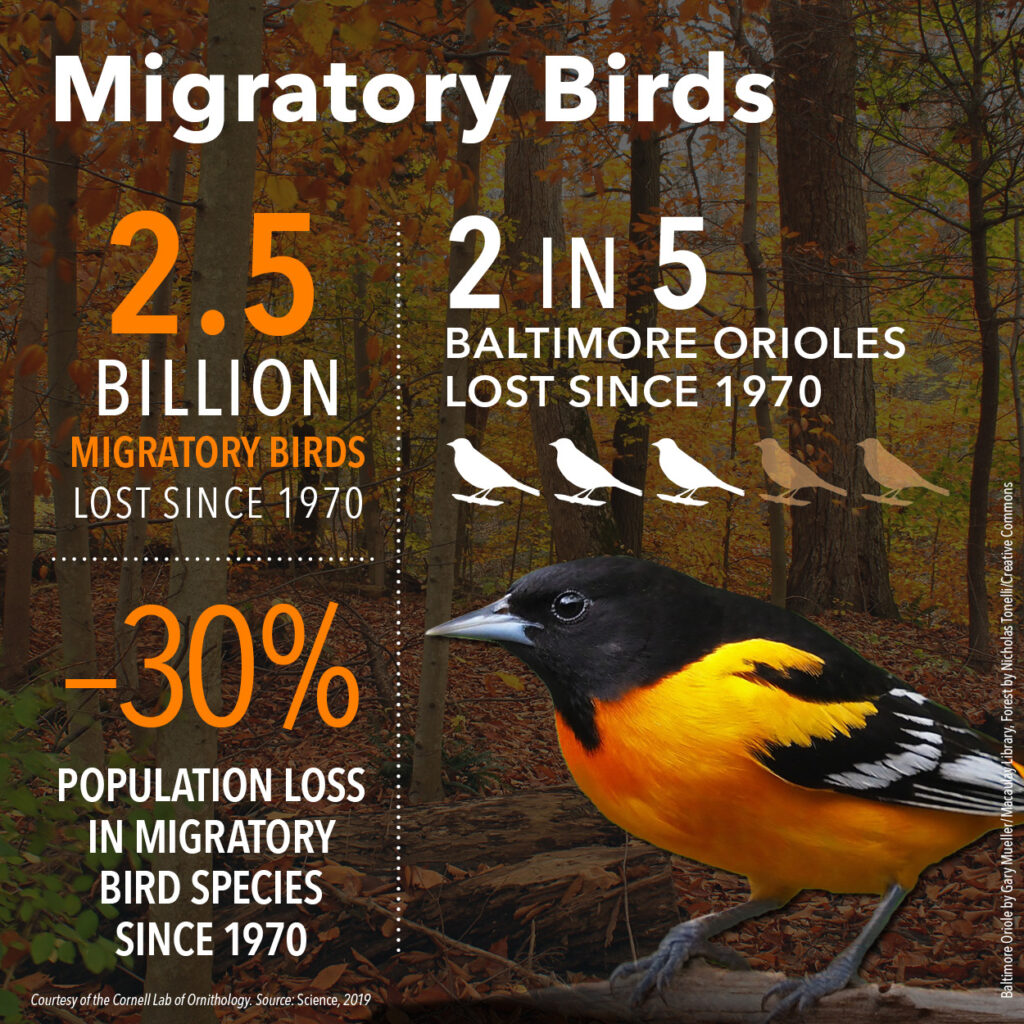Study Estimates Nearly 3 Billion Birds Gone Since 1970

On September 19, 2019, Science published a study that estimated North American bird populations have decreased by approximately 2.9 billion since 1970, which represents a 29% loss over 48 years. The study:
- Was co-authored by Cornell Laboratory of Ornithology, American Bird Conservancy, National Wildlife Research Centre, Patuxent Wildlife Research Center, Canadian Wildlife Service, Upper Midwest Environmental Sciences Center, Bird Conservancy of the Rockies, and Migratory Bird Center (Smithsonian Conservation Biology Institute)
- States that “more than 90% of the total cumulative loss can be attributed to 12 bird families”
- Shows that across breeding locations, grassland birds declined the most, losing over 700 million individuals across 31 species
- Reports that native migratory birds lost 2.5 billion individuals across 419 species.

National Audubon Press Release Information
On the same day the study was published, National Audubon issued a press release declaring a “Bird Emergency.” In Audubon’s statement:
- President and CEO, David Yarnold, said, “The connection between birds and humans is undeniable—we share the same fate. This is a bird emergency with a clear message: the natural world humans depend on is being paved, logged, eroded , and polluted.”
- Yarnold went on to declare this a “full-blown crisis” and called for protection of priority areas, including the Colorado River.
- Dr. Nicole Michel, senior quantitative ecologist with Audubon, said, “Birds are excellent indicators of environmental health. Severe declines in common birds, like those shown in this study, tell us something is wrong and underscores the need to become better stewards of the planet.
What Can You Do to Help?
Many of us read news about our environment and feel overwhelmed and helpless. However, in addition to astounding declines in bird populations, the recent study showed a few rays of light: conservation activities are helping some bird populations, including raptors and waterfowl.
Things you can do to help, include:
- Supporting Denver Audubon
- Participating in Audubon’s Christmas Bird Count (We will provide more information about this soon!) Data from the Christmas count was one of the sources utilized by researchers in this study.
- Reading and implementing our 50 ways to make Denver more bird friendly
Links to other resources and articles:



